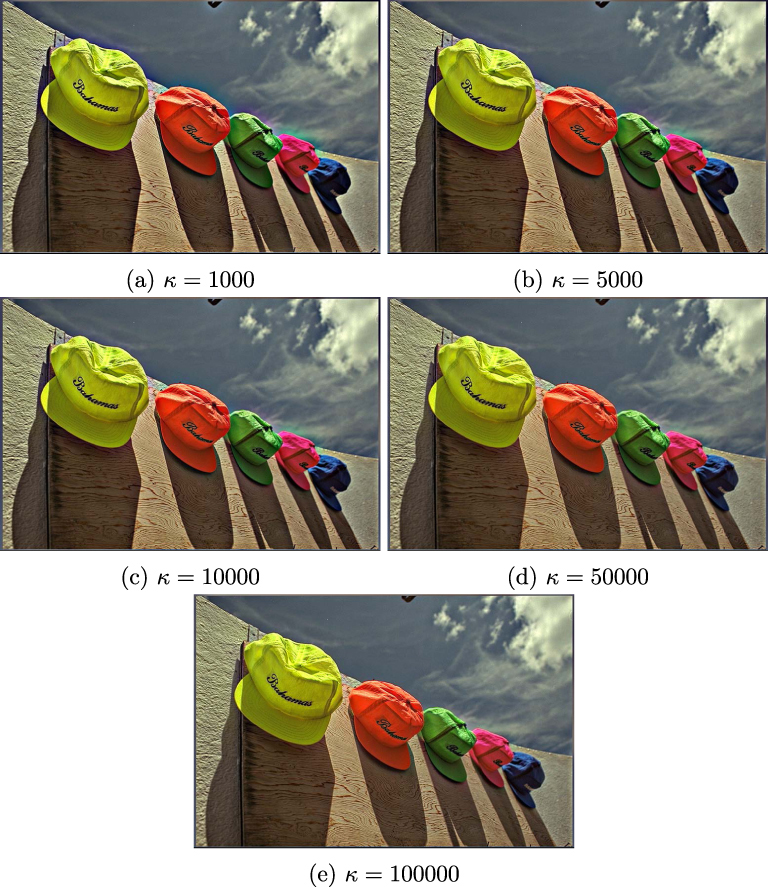References
1LandE. H.The retinexAmerican Scientist1965Vol. 52WileyHoboken, NJ247264247–64
2LandE. H.MccannJ. J.1971Lightness and retinex theoryJ. Opt. Soc. Am.611111–1110.1364/JOSA.61.000001
3LandE. H.1977The Retinex Theory of Color VisionSci. Am.237108129108–2910.1038/scientificamerican1277-108
4McCannJ. J.RizziA.The Art and Science of HDR Imaging2011John Wiley & SonsNew York
5PariharA. S.SinghK.A study on Retinex based method for image enhancement2018 2nd Int’l. Conf. on Inventive Systems and Control (ICISC)2018IEEEPiscataway, NJ619624619–2410.1109/ICISC.2018.8398874
6BaslamisliA. S.LeH.-A.GeversT.CNN based learning using reflection and retinex models for intrinsic image decompositionProc. IEEE Conf. on Computer Vision and Pattern Recognition2018IEEEPiscataway, NJ667466836674–83
7WeiC.WangW.YangW.LiuJ.Deep retinex decomposition for low-light enhancementBritish Machine Vision Conf. 2018201810.48550/arXiv.1808.04560
8LiangJ.XuY.QuanY.WangJ.LingH.JiH.
9KolásØ.FarupI.RizziA.2011Spatio-temporal retinex-inspired envelope with stochastic sampling: A framework for spatial color algorithmsJ. Imaging Sci. Technol.55040503-1040503-10040503-1–040503-1010.2352/J.ImagingSci.Technol.2011.55.4.040503
10ProvenziE.FierroM.RizziA.CarliL. D.GadiaD.MariniD.2007Random spray retinex: A new retinex implementation to investigate the local properties of the modelIEEE Trans. Image Process.16162171162–7110.1109/TIP.2006.884946
11SimoneG.FarupI.Spatio-temporal retinex-like envelope with total variation6th European Conf. on Colour in Graphics, Imaging, and Vision (CGIV)2012AmsterdamThe Netherlands176181176–81
12GianiniG.RizziA.DamianiE.2016A retinex model based on absorbing markov chainsInf. Sci.327149174149–7410.1016/j.ins.2015.08.015
13ThomasJ.-B.FarupI.2018Demosaicing of periodic and random color filter arrays by linear anisotropic diffusionJ. Imaging Sci. Technol.6250401-110.2352/J.ImagingSci.Technol.2018.62.5.050401
14FarupI.2020Individualised halo-free gradient-domain colour image daltonisationJ. Imaging611610.3390/jimaging6110116
15FrankleJ. A.McCannJ. J.
16MariniD.RizziA.2000A computational approach to color adaptation effectsImage Vis. Comput.18100510141005–1410.1016/S0262-8856(00)00037-8
17RizziA.MariniD.CarliL. D.2002LUT and multilevel Brownian Retinex colour correctionMach. Graphics Vis. Int. J.11153168153–68
18McCannJ. J.2004Capturing a black cat in shade: Past and present of Retinex color appearance modelsJ. Electron. Imaging13364736–4710.1117/1.1635831
19CooperT. J.BaqaiF. A.2004Analysis and extensions of the Frankle-McCann Retinex algorithmJ. Electron. Imaging13859285–9210.1117/1.1636182
20FinlaysonG. D.HordleyS. D.DrewM. S.Removing shadows from imagesProc. 7th European Conf. on Computer Vision2002SpringerBerlin823836823–3610.1007/3-540-47979-1_55
21MontagnaR.FinlaysonG. D.2011Constrained pseudo-Brownian motion and its application to image enhancementJ. Opt. Soc. Am. A28167716881677–8810.1364/JOSAA.28.001677
22JobsonD. J.RahmanZ.-u.WoodellG. A.1997Properties and performance of a center/surround retinexIEEE Trans. Image Process.6451462451–6210.1109/83.557356
23BarnardK.FuntB.Investigations into multi-scale retinexProc. Colour Imaging in Multimedia’9819989179–17
24HuckF. O.FalesC. L.DavisR. E.Alter-GartenbergR.2000Visual communication with retinex codingAppl. Opt.39171117301711–3010.1364/AO.39.001711
25CowanJ. D.BressloffP. C.2002Visual cortex and the Retinex algorithmProc. SPIE4662278285278–85
26RahmanZ.-u.JobsonD. J.WoodellG. A.2004Retinex processing for automatic image enhancementJ. Electron. imaging13100110100–1010.1117/1.1636183
27PeronaP.MalikJ.1990Scale-space and edge detection using anisotropic diffusionIEEE Trans. Pattern Anal. Mach. Intell.12629639629–3910.1109/34.56205
28TschumperleD.DericheR.2005Vector-valued image regularization with PDEs: A common framework for different applicationsIEEE Trans. Pattern Anal. Mach. Intell.27506517506–1710.1109/TPAMI.2005.87
29Di ZenzoS.1986A note on the gradient of a multi-imageComput. Vis. Graph. Image Process.33116125116–2510.1016/0734-189X(86)90223-9
30RombachR.BlattmannA.LorenzD.EsserP.OmmerB.High-resolution image synthesis with latent diffusion models2022 IEEE/CVF Conf. on Computer Vision and Pattern Recognition (CVPR)2022IEEEPiscataway, NJ10.1109/CVPR52688.2022.01042
31XiaB.ZhangY.WangS.WangY.WuX.TianY.YangW.GoolL. V.DiffIR: Efficient diffusion model for image restorationProc. IEEE/CVF Int’l. Conf. on Computer Vision (ICCV)202310.48550/arXiv.2303.09472
32NgoK. V.DokkebergC. A.FarupI.PedersenM.2015Quickeval: A web application for psychometric scaling experimentsProc. SPIE9396212224212–24
33ChandlerD. M.HemamiS. S.2007VSNR: A wavelet-based visual signal-to-noise ratio for natural imagesIEEE Trans. Image Process.16228422982284–9810.1109/TIP.2007.901820
34VenkatanathN.PraneethD.BhM. C.ChannappayyaS. S.MedasaniS. S.Blind image quality evaluation using perception based features2015 21st National Conf. on Communications (NCC)2015IEEEPiscataway, NJ161–610.1109/NCC.2015.7084843
35MittalA.SoundararajanR.BovikA. C.Making a “completely blind” image quality analyzerIEEE Signal Processing Letters2012Vol. 20IEEEPiscataway, NJ209212209–1210.1109/LSP.2012.2227726
36SimoneG.PedersenM.HardebergJ. Y.2012Measuring perceptual contrast in digital imagesJ. Vis. Commun. Image Represent.23491506491–50610.1016/j.jvcir.2012.01.008
37ZvezdakovaA.KulikovD.KondraninD.VatolinD.Barriers towards no-reference metrics application to compressed video quality analysis: On the example of no-reference metric NIQE29th Int’l. Conf. on Computer Graphics and Vision, CEUR Workshop Proc.2019RWTHAachen222722–710.48550/arXiv.1907.03842

 Find this author on Google Scholar
Find this author on Google Scholar Find this author on PubMed
Find this author on PubMed
 Open access
Open access